A decade ago, the city of Biddeford transformed itself from a crumbling mill town with vacant streets and a bad reputation into the youngest city in Maine, bursting with nationally recognized restaurants and a growing arts scene.
Sanford, about 20 miles inland, hopes that its renaissance will be next. Officials say it’s already begun.
With a population of about 22,000, Sanford is Maine’s seventh-largest city. It sits at the crossroads of York County, with Routes 4, 202, and 109 passing through the downtown and mill district.
Its history is all too familiar, repeated in other former mill towns throughout the state.
From the 1830s through the 1950s, the Goodall Textile Mills were the employment anchor of the city.
People flocked to Sanford. The population boomed, and the vibrant city bloomed. But when the mills closed in the mid-1950s, putting 3,500 people out of work, the economy was devastated.
Storefronts were vacated. Infrastructure was neglected.

The Trust Company Building at the heart of downtown Sanford is up for sale. Ben McCanna/Staff Photographer
In the early 1970s, much of Sanford’s village of Springvale was demolished under “urban renewal,” a national effort to revitalize American cities by razing buildings and clearing the way for redevelopment. But it didn’t work out that way.
“The idea that developers and businesses would rush in and buy this vacant land just didn’t happen in many places. It certainly didn’t happen in Springvale,” said Harland Eastman, chairman of the Sanford-Springvale Historical Society.
Springvale had been “stripped bare,” Eastman said, and it remained a veritable wasteland for the next 20 years.
Then, in 1983, Nasson College, a private liberal arts college in Springvale that in its heyday had about 900 students, filed for bankruptcy and closed its doors. It was another economic blow for the struggling city.
Decades later, Sanford is still feeling the lingering effects – and its reputation has suffered because of it. But behind the scenes, city officials have been working diligently to revive Sanford.
They’ve been chipping away at the work for years: mill renovations, downtown activities, educational upgrades and business attraction efforts.
But a series of recent investments – including a multimillion-dollar grant from the government, a multimillion-dollar investor with plans to rehab a deteriorating mill building, and hundreds of housing units in the works – promises to ignite a firestorm of activity.
Keith McBride, executive director of the Sanford Regional Economic Growth Council, said Sanford is ready to embrace this next phase.
“When you leave Sanford, to everyone else, (the city) has a stigma attached to it,” he said. “But when you come here – and this is what’s surprised me – this is a community that believes in itself. This is a community on the move right now. Usually, change is such a scary and resisted thing. … Everyone is so ready.”

Mike Gill pours a beer from behind the bar at River Junction Brewing on the outskirts of Sanford. Gill opened the business in July and said the community response to the city’s first brewery has been terrific. Ben McCanna/Staff Photographer
SANFORD REIMAGINED
After 20 years as a home brewer, Mike Gill finally opened his own brewery, River Junction Brewing, in July.
It was a huge personal milestone for Gill, who brewed for manufacturing and distribution for the last two years while lining up the pieces to open the taproom.
It was never a question that Gill would open River Junction in his adopted city, even if people cautioned him against it.
“Sanford is a city of (22,000), and it doesn’t have a brewery. Every podunk town seems to have a brewery in it,” he said.
So far, things have been going well.
He just got a few TVs up and running for Sunday football, there are tentative plans to work out a menu with next-door Shain’s of Maine, and Gill has been working with the city to explore expanding into the upstairs.
“The feedback we’ve been getting from people has been overwhelming,” he said. “People seem to love the place. They love the beer.”
Gill didn’t put his brewery in Sanford as a strategic move to help revitalize the area, but he’s glad to play a part.
“I hear a lot of people like to complain about the town, but … Sanford is heading in the right direction. At least people are building things and businesses are moving in,” he said.

The Hanselmann family – from left, Jeff, Elaina and Ayn – stand behind the counter at Frannie’s Mini Donuts. Jeff and Ayn are owners of the business, located across from Central Park on Main Street in Sanford. Ayn is also a city councilor and a member of Friends of Downtown Sanford. Ben McCanna/Staff Photographer
Downtown officials hope other businesses will follow Gill’s lead.
“We get excited with any business downtown,” said Ayn Hanselmann, co-owner of Frannie’s Mini Donuts on Main Street. Hanselmann is also a city councilor and a member of Friends of Downtown Sanford.
The goal is to get people shopping and eating locally when they can, she said, whether that’s at a hidden gem of a new place like the brewery or Addy’s, a food truck that opened this summer.
Things are moving outside of downtown, too. The old 7-Eleven is becoming a T-Mobile. A new Aroma Joe’s is going in. A Starbucks location was recently announced.
“You can see there are investments by larger corporate entities coming to Sanford,” Hanselmann said. “We hope that more small businesses will choose to invest in Sanford, too.”

WinnDevelopment intends to rehab the Stenton Trust, formerly known as the Goodall Worsted Co. Mill, into 90 one-to-three-bedroom, mixed-income apartments. Ben McCanna/Staff Photographer
MILL REDEVELOPMENT
But reenergizing the downtown will take more than a few new businesses.
In April, the Sanford planning board gave WinnDevelopment, a Boston-based firm with a history of mill development, the green light to rehab the Stenton Trust, formerly known as the Goodall Worsted Co. Mill. Renovating architecturally interesting mills has been a driver of economic renaissance in other cities in Maine, including Biddeford.
WinnDevelopment plans to transform the 1922 mill into about 90 one-to-three-bedroom, mixed-income apartments. The first floor of the building will be reserved for common facilities and potential future commercial space.
The roughly $50 million project has hit a few roadblocks as the cost of construction and labor has gone up considerably, said Adam Stein, executive vice president.
He’s hopeful that some additional funding from MaineHousing, expected to be released next month, could help move the project forward.
While some of the momentum is stalled, city officials aren’t starting from scratch, either.
“We’re just building upon everything we’ve started,” said City Manager Steven Buck.
The city’s redevelopment efforts got a needed $25 million boost last year from the federal Rebuilding American Infrastructure with Sustainability and Equity program, or RAISE.
The city will use the grant, plus an additional $10 million in local and state funding, to reconstruct roads and sidewalks in the heart of downtown, install energy-efficient streetlights, improve parking, and extend the 45-mile SanfordNet fiber-optic network to the downtown and mill district.

A pedestrian crosses the Mousam River as it flows under Washington Street and between mills in downtown Sanford. Ben McCanna/Staff Photographer
The project includes building a park-and-ride facility to serve the hundreds of Portsmouth Naval Shipyard employees living in the city. Despite the roughly 45-minute commute, Sanford is home to more shipyard employees than any other municipality in Maine.
The grant also will help the city complete the Mousam Promenade, a 1.5-mile pathway around Number One Pond, and connect it to the local trail system.
Affordable housing and homelessness remain a huge concern, but Buck said there are about 330 new units of commercially developed housing on the books between this year and next, and another 84 awaiting permits.
Three former Nasson College dormitories in Springvale are being renovated into 83 one- and two-bedroom apartments. The campus buildings have sat empty since the college closed in the early 1980s.
A TALE OF TWO CITIES
It’s easy to make comparisons between the two York County cities.
Both have a long history as a worker’s community. For decades, the mills dominated the economic landscape in both Sanford and Biddeford. And like in other former mill towns, when the mills closed up shop and the workers left, many of the downtown businesses were forced to follow suit.
Much of that infrastructure remains in both cities, with historic downtown buildings, including the former mills, still mostly intact.
Sanford and Biddeford both have a lot of pride in their communities’ pasts and both have been stigmatized over the years, said Delilah Poupore, executive director of Heart of Biddeford, a nonprofit agency dedicated to improving the city’s downtown.
So what lessons can Sanford take from Biddeford’s redevelopment?

Poupore said three pieces made Biddeford’s reinvention successful: A common, comprehensive, communitywide vision; a major private investor in Doug Sanford, who bought and renovated the Pepperell Mill; and some city-driven investments, like the $6 million purchase and subsequent demolition of the Maine Energy Recovery Co. trash incinerator.
“No investor wants to invest in a community where the city doesn’t do that for itself first,” Poupore said.
Some elements set Sanford apart. Cities like Westbrook, Saco and Biddeford that have had more vitality pumped into their downtowns are all coastal. They have exits on Interstate 95.
Sanford, though, is 15 to 20 minutes inland from the Biddeford exit and up to 30 from Kennebunk.

The Mousam River spills over the falls at Washington Street in downtown Sanford. Ben McCanna/Staff Photographer
Historically, that’s been a disadvantage.
“We’ve had to work harder and a little smarter to get similar levels of development,” said Buck, the city manager.
However, Sanford also has less high-density development. It’s still predominantly single-family homes and there’s a fair amount of land.
McBride, of the economic growth council, and Poupore say this allows the city to build more and more affordable-housing projects into their development plans.
Biddeford was unprepared to meet the housing demand that surged during the pandemic as thousands flocked to Maine. Rents in the mill buildings shot to thousands per month and, like many others, the city is entrenched in a severe housing shortage.
Sanford is not exempt from the affordable housing crisis, McBride said, but it is starting the redevelopment process in the thick of it.
“We know we need housing right now,” he said. “We’re so stuck in the problem (that) we’re more focused on it than others were five years ago.”
Affordable housing will also help minimize gentrification, Poupore said.
It’s important to ensure that the people and businesses who’ve lived in and shaped the city can still thrive and that young people who left the area will be able to return.
“When you get to the point where it’s not affordable to come back, what did you revitalize for?” she said.
CHANGING DEMOGRAPHICS
The pandemic sent Maine’s real estate market skyrocketing, with rising prices and shrinking inventory that continue to put pressure on buyers.
Cities like Biddeford, which had once been considered affordable for young professionals and families, were suddenly much pricier.

In 2019, the average home price in Biddeford was $268,000. Last year it was $400,000, a 49% increase that mirrors Maine’s statewide increase.
Other towns in York County are even more expensive. In Kennebunk, the median 2022 home price was $613,000. In Saco, it was $458,000. In Wells, it was $525,000.
“People are being priced out in the Biddeford and Portland markets,” said Rebecca Lapierre, a Sanford-based broker with Town Square Realty. “Sanford’s housing is still somewhat affordable for today’s market. … I’ve seen a lot more younger couples coming into the community that are not from the area.”
In 2022, the average home in Sanford sold for $300,000. So far this year, houses are selling for around $330,000 – $50,000 below the current state median price, and well below Cumberland County’s price of $550,000 and York County’s $485,500.
It’s a far cry from the $199,000 average in 2019, but houses priced under $350,000 are hard to come by in southern Maine, making Sanford a more appealing destination for first-time homebuyers.
Lapierre said the city is already ideal for first-timers, and future development will only attract more.
“There are some things that are finally falling into place that I think are what we need to try to attract some younger folks into the community,” she said.

Gables stand in a row along Cottage Street, one of the busy approaches to downtown Sanford. Housing prices in Sanford are well below other York County communities, attracting new residents. Ben McCanna/Staff Photographer
It’s already having an effect.

The area median income in Sanford increased by about 30% between 2019 and 2021, according to the U.S. Census Bureau’s American Community Survey. The survey is every five years, so more current data was not immediately available.
McBride said 2021 also marked the first time in at least five years that Sanford’s area median income ($65,671) was higher than Biddeford’s ($58,142). That’s just slightly above the statewide median, which in 2021 was $63,182.
McBride said new and affordable housing will be critical to attracting young people and families as overflow from surrounding areas continues to push people inland.
“In between all these high-pressure areas is Sanford,” McBride said. “This pressure is going to release and it’s going to come for us. We need to make sure we have the landscape set in the right way.”
GOOD BONES
Andrea Pais moved from Massachusetts to Sanford in 2018, drawn in partly for practical reasons – the affordability, and the relative proximity to I-95.
One of her three children was entering high school, and the new $100 million high school proved to her that the community valued education.
There were other things to love about the city, too, like the extensive trail system, Goodall Park and Number One Pond.
But the people made the biggest difference.
“What sets Sanford apart is there are still pockets of the town that operate in that community feeling that’s lost in a lot of the big cities,” she said. “People still desperately cling onto and care about what they consider community.”

Zach Pais, left, Tiegan Eisenhaur and Pip Pais sit in the empty, post-season stands of Goodall Park with their mother, Andrea Pais, who works as the office and sales manager for the Sanford Mainers baseball team. The family sees great energy in the city. Ben McCanna/Staff Photographer
Pais, the office and sales manager for the Sanford Mainers baseball team, sees excitement and energy growing in Sanford every day.
She and her daughter are fans of the show “Gilmore Girls” and fell in love with Stars Hollow, the picturesque, fictional Connecticut town where the show takes place. It’s the kind of place they always hoped to live.
“If you just drive through Sanford and nobody tells you about the problems, it has that quintessential downtown,” she said.
She believes it can still be that.
“We’re going to stick around until it becomes our Stars Hollow.”
Send questions/comments to the editors.




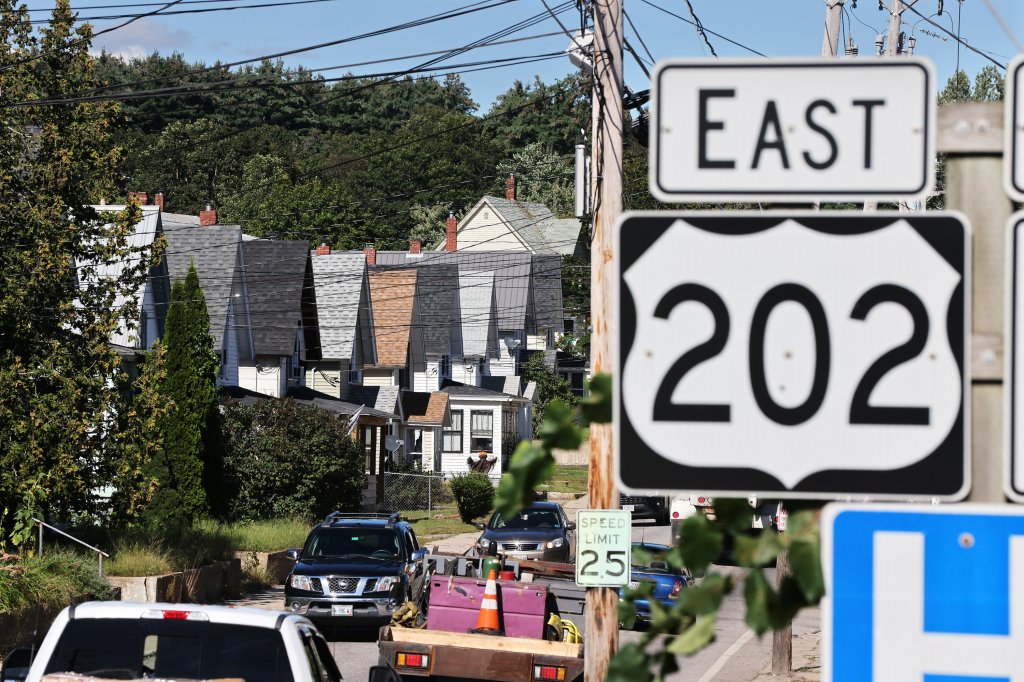
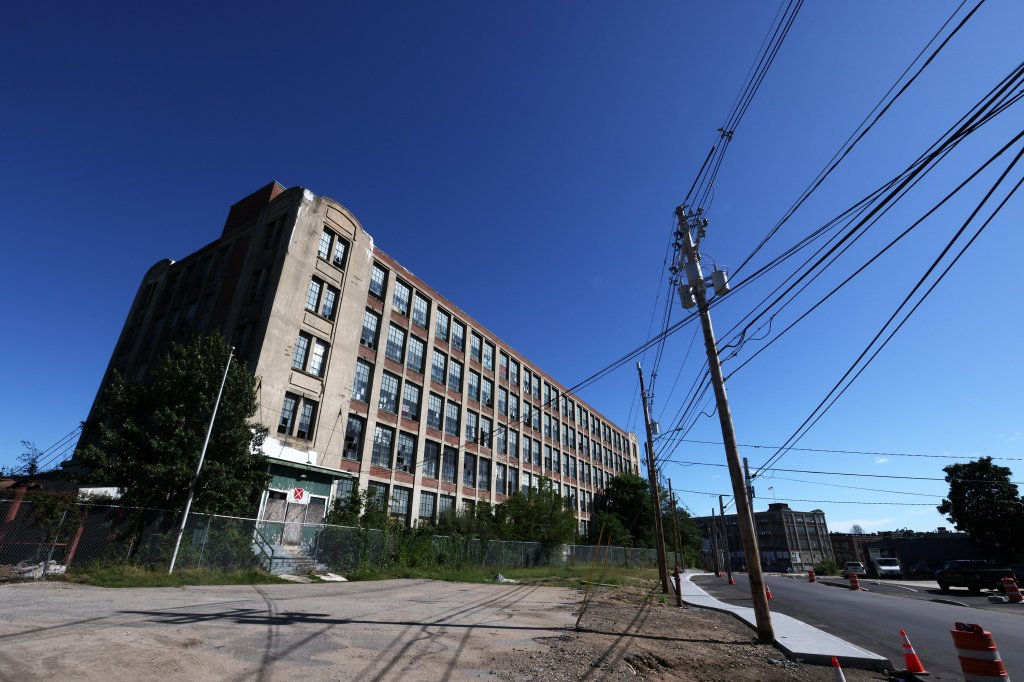
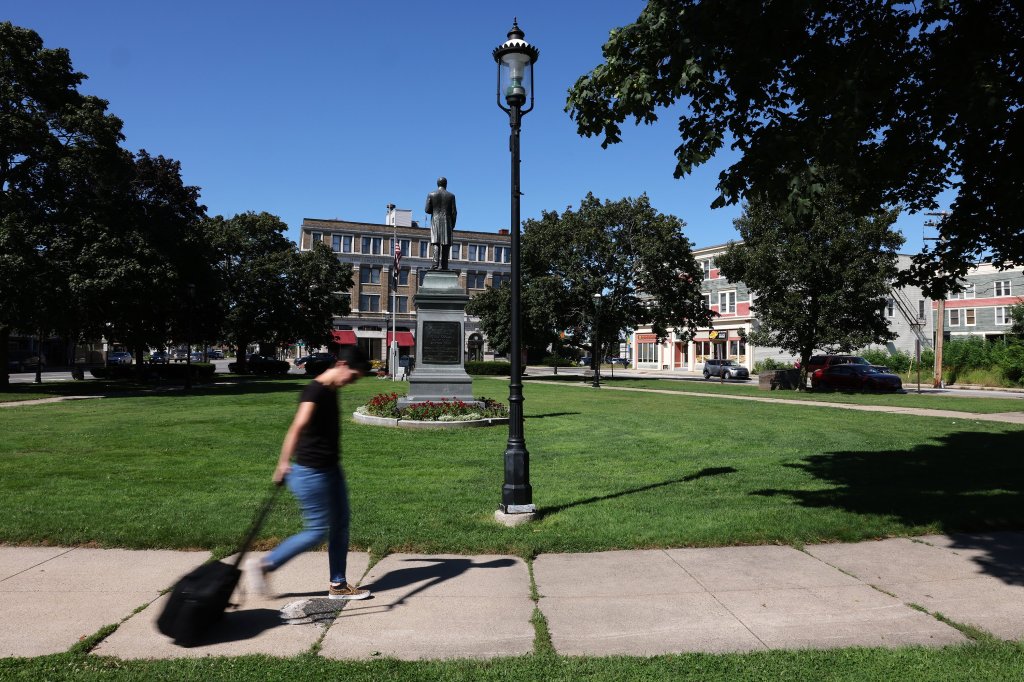

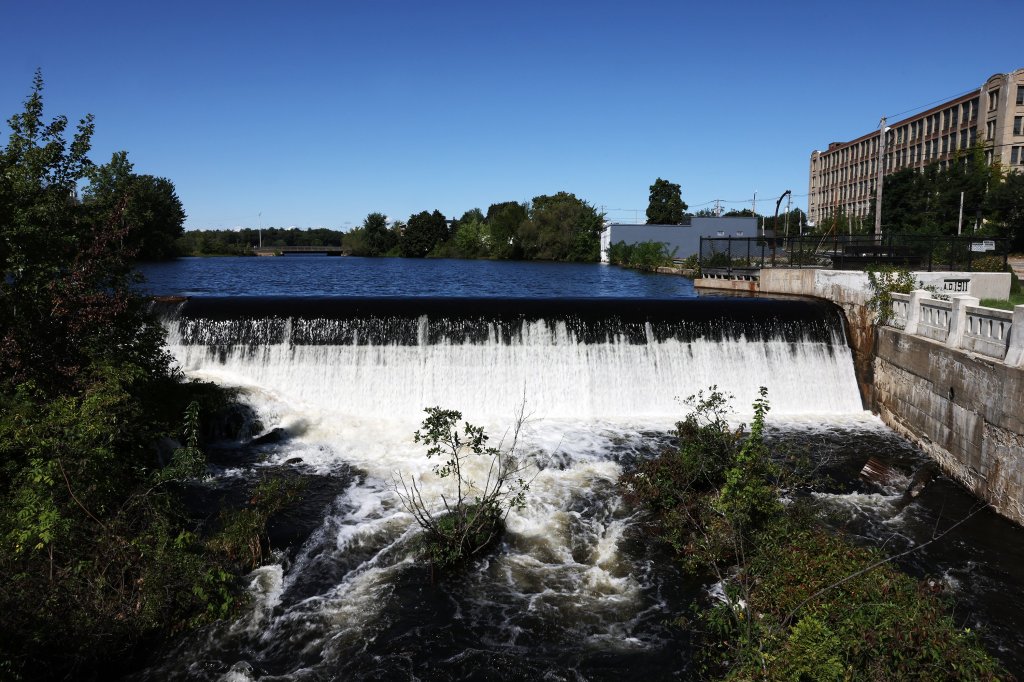
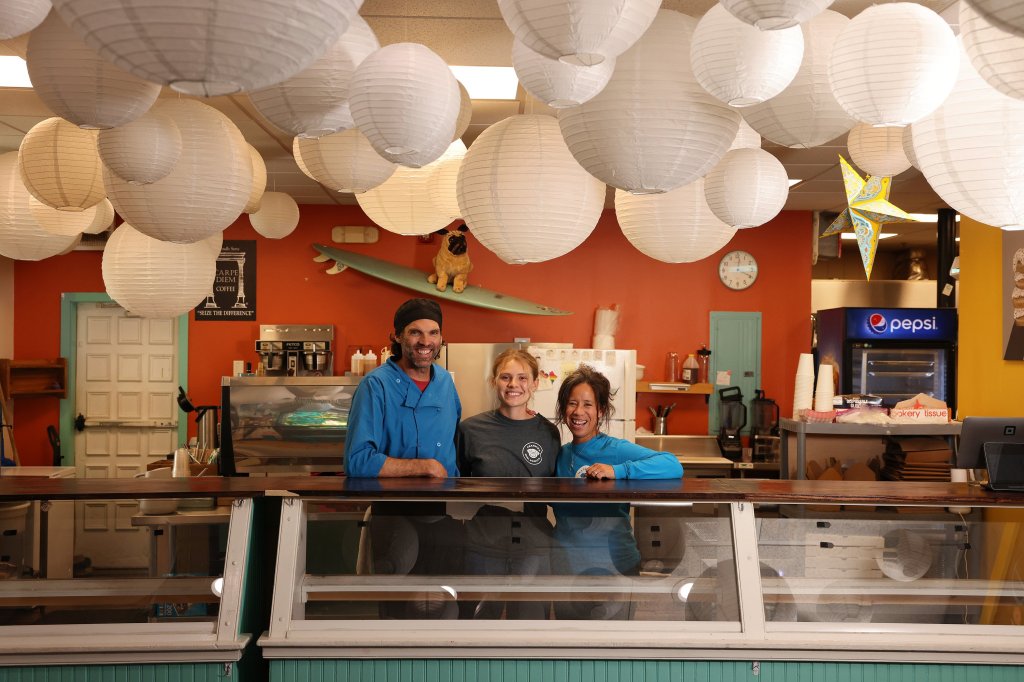
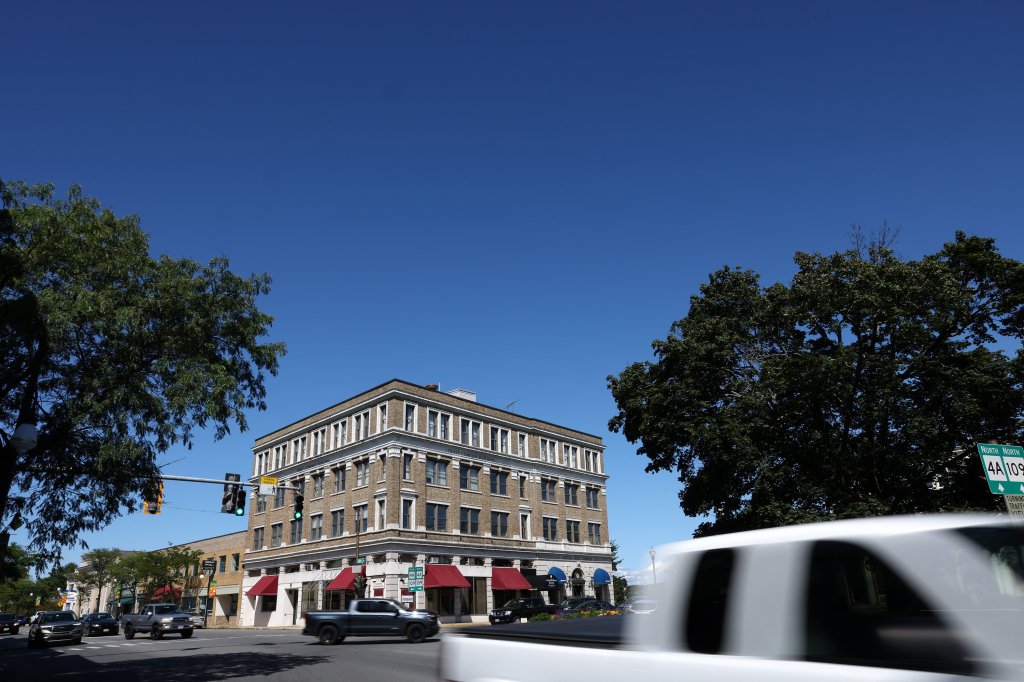
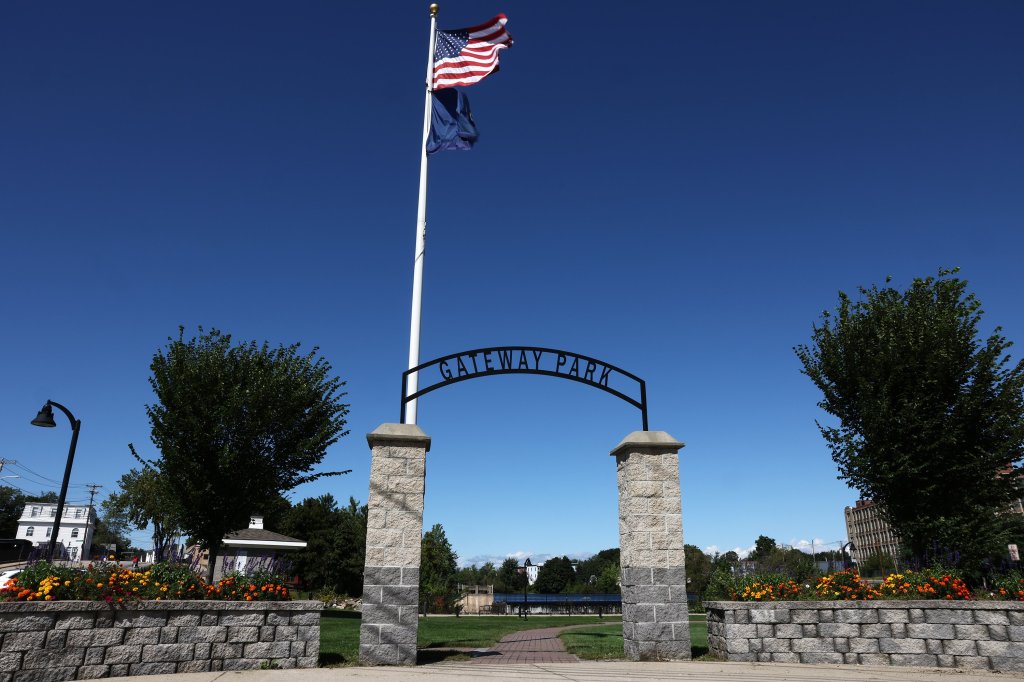
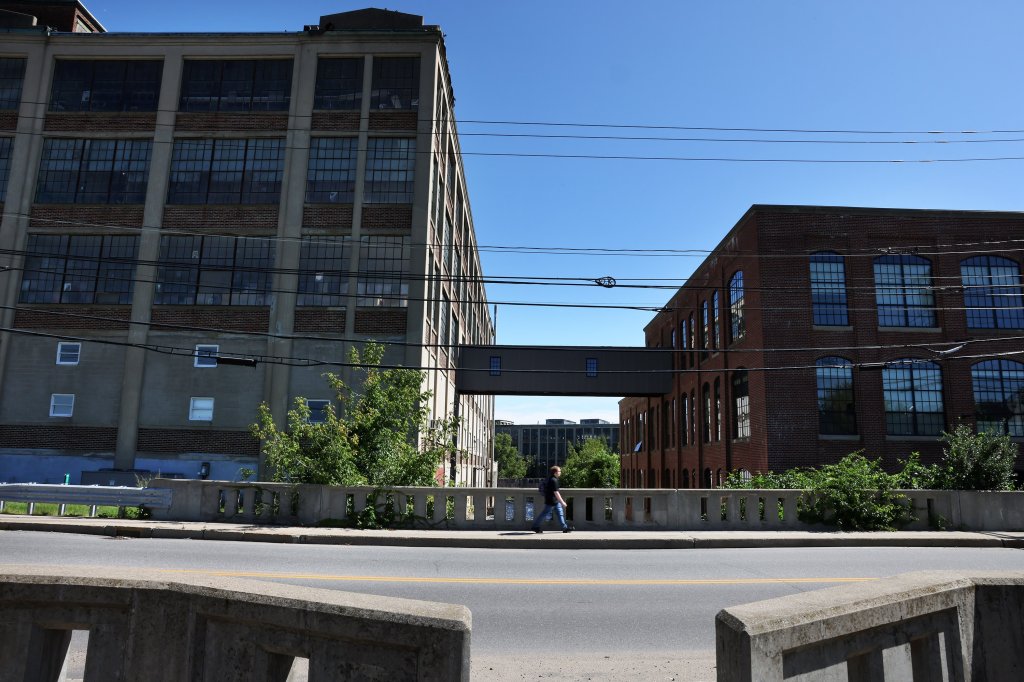
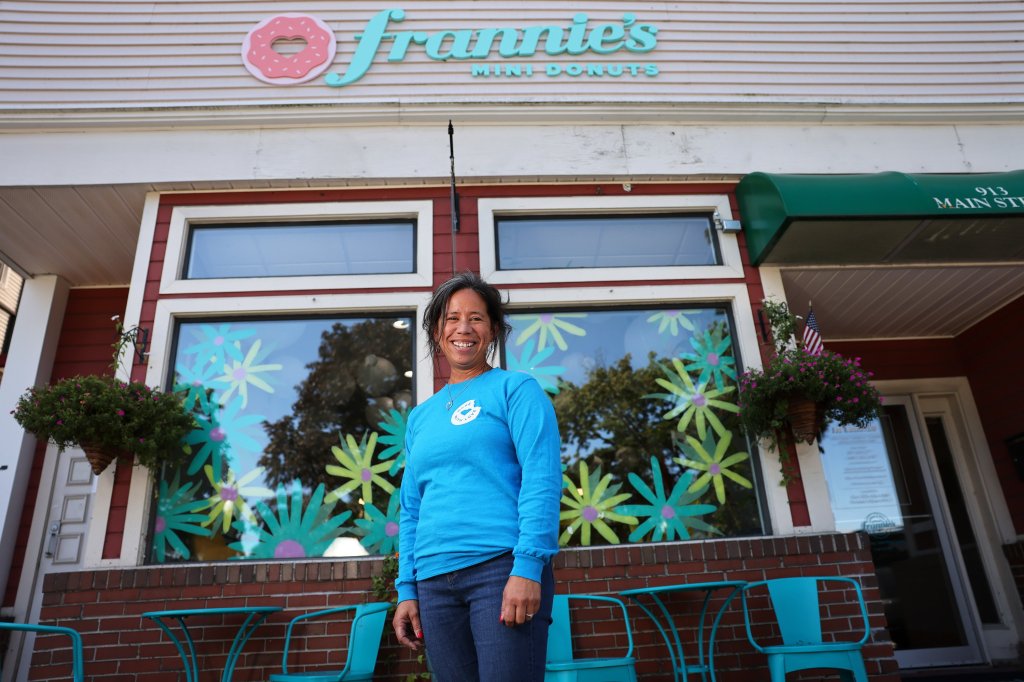

Comments are no longer available on this story